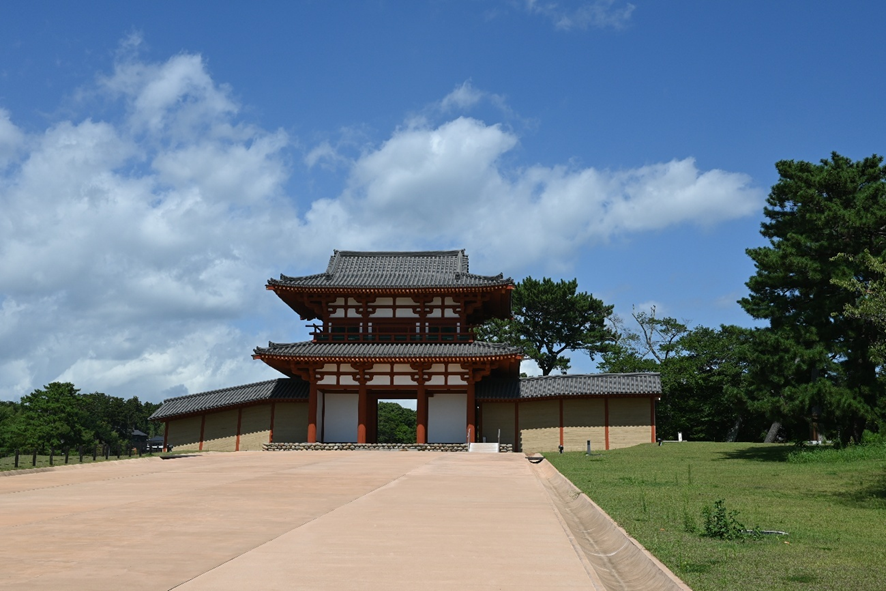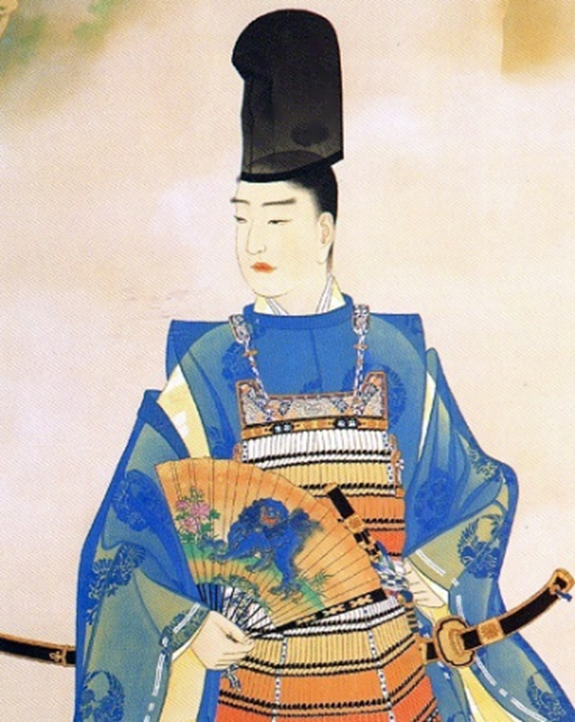What is Tagajo ~SEP,2025~
- 羽場 広樹

- Sep 18
- 6 min read

Taga Castle was built in the early Nara period (the first year of the Jinki era, 724) as an administrative center and a military garrison (naval base). The 900m square site was surrounded by a 5m high wall and could be accessed through three gates, but the south gate has been restored.

It served as both the political and military capital of the Tohoku region, and its scale and the remains of facilities set it apart from the ancient provincial capitals we have seen so far, giving it a sense of grandeur as the most important strategic base at the time. Mutsu and Dewa provinces were special regions for the Nara court, bordering the Emishi, and Taga Castle was used as a base for governing both provinces and advancing its policy of advancing north.

In July, I visited the ruins of Kinowanosaku near Sakata (perhaps the Dewa provincial capital in the first half of the 8th century?), and learned that Taga Castle was a base for controlling the entire Oshu region.

In the hall next to the south gate stands the "Taga Castle Monument," a stone monument that was designated a national treasure just last year. Fujiwara Asakari, who carried out the first major renovation (762, the 6th year of the Tenpyo Hoji era), commemorated his achievements on the monument. He was the son of Fujiwara no Nakamaro, who was a favorite of Empress Koken, and was killed two years later when his father fell from grace.

The inscription was so interesting that I ended up buying a copy of the rubbing, even though I thought it was expensive (1,500 yen). It says it's 1,500 ri to Kyoto, but in the Nara period, one ri was about 540 meters, so it would be about 800 km. I tried searching for the current route and it's roughly the same, so it's quite accurate.

The border with Ezo is 120 ri away, which is 65 km on this scale. Looking at a map, this also roughly corresponds to the border between Miyagi and Iwate prefectures. Asakari built Monou Castle north of Ishinomaki city, which was probably a secondary castle built near the border.

What's interesting is that it says it's 3,000 ri from the country of Mohe. The Mohe were a people who lived north of Bohai, which had diplomatic exchanges with Japan, so it's interesting to see why Mohe is listed instead of Bohai. At the very least, it seems that the strategy for Oshu at the time was carried out with an eye on its position relative to the continent.

I visited Mutsu Sosha Shrine, located on the northern edge of Taga Castle. Sosha Shrine was originally a collection of shrines within the country that were grouped together to simplify the process for provincial governors, who were required to visit all the shrines when they took up their new post.

Taga Castle was founded in 724, and last year marked the 1,300th anniversary with a commemorative event, where I purchased a commemorative towel for sale at the shrine office. The shrine is located near the east gate of Taga Castle, and it seems that this was the busiest place on the road that led to Shiogama, the main port.

The main passages within the castle are paved with pebbles. There are still many unexcavated areas within the vast grounds, so we drove around the main sights. It took about three hours, but we're looking forward to seeing how the area will be improved in the future.

Ukishima Shrine was apparently built around the time Taga Castle was founded, and is enshrined on a small hill in a corner of the town that was built around the castle. During the Heian period, many poems were written about the shrine as a utamakura, and several excellent poems are featured on the short approach to the shrine. Matsuo Basho made a detour from Shiogama to see the stone monument mentioned above and visit the shrine before returning to Shiogama.

Within the grounds, there is also a shrine dedicated to Minamoto no Toru, who is a possible model for Hikaru Genji. He served as both Chunagon and Mutsu Dewa Ansatsushi (administrative chief of Mutsu and Dewa provinces), and legend has it that he was posted to this area and lived in Shiogama during that time. In reality, it is unlikely that a nobleman who also served as Chunagon would be posted to this area, but after the Otenmon Incident that occurred two years later, he lost one rival after another and was promoted to the head of the Daijokan (Minister of the Left), making him a very popular figure.

The Nara period was also the heyday of state Buddhism, and a large temple was built near Taga Castle, which is commonly referred to as Taga Castle Ruins. Subsequent excavations have identified writing on many of the pottery vessels used in the Manto-e festival, leading to the assumption that the official name was Kannon-ji Temple. Come to think of it, the name of the official temple in Dazaifu was Kannon-shoji Temple, so this is quite plausible.

The foundations of the lecture hall, three-story pagoda, bell tower, and monks' quarters all remain intact.

I was fascinated by the paintings of Tsuneyoshi Kusaka, who painted many of the Manyoshu paintings, which were displayed on the walls of the Tagajo City Buried Cultural Center. Tagajo Castle and the abandoned temple were illuminated by the moonlight.

From the time of the Asakari stone monument, the battles with the Emishi intensified, and a border conflict known as the 38-year Tohoku War ensued. The conflict was brought to a temporary end by two generals, Sakanoue no Tamuramaro and Fumiya Watamaro, between the end of the 8th century and the beginning of the 9th century. During this time, the capital was moved to Heian-kyo, and the conquests of Emperors Kanmu, Heizei, and Saga came to a temporary end with the construction of Isawa Castle and Shiwa Castle. As the border moved north, Taga Castle's role became more of a provincial capital, and its role as a kokushi (provincial governor) gradually diminished, leading to its abandonment in the mid-11th century.

However, Taga Castle continued to play an important role as a military base up until the time of the Northern and Southern Courts. During the wars of Zenkunen and Gosannen, Minamoto no Yoriyoshi and his son Yoshiie, Minamoto no Yoritomo who attacked the Fujiwara clan of Oshu, and Kitabatake Akiie, the treasure of the Southern Court, all used Taga Castle as their base.

The Tohoku History Museum opened in 1999, and it's no surprise that it was located in Tagajo City. The permanent exhibits, which provide an overview of the history of the entire Tohoku region, are well done.

I decided to stop in Miharu and return to Tokyo via the Joban Expressway. Miharu was ruled by the Akita clan during the Edo period, who were descendants of Abe Sadato, the leader of the Emishi. They were based in northern Dewa Province, but after the Battle of Sekigahara, the Satake clan was relocated, and the Akita clan was temporarily relocated to Shishido in Hitachi Province, before being relocated to Miharu, where they remained until the Meiji Restoration. Miharu Castle is a medieval castle built on a steep mountain, but I was able to drive up to just before the main keep. It seems that daily government affairs were carried out around Miharu Elementary School at the foot of the mountain.

This year, the TV drama "Dokuganryu Masamune" is being rebroadcast on BS NHK. During the Sengoku period, Miharu was under the rule of the Tamura clan. During the Sengoku period, the Tohoku region was dominated by feudal lords, including those descended from Kamakura vassals and the Shiba clan (Mogami and Osaki) of the Ashikaga clan. However, the Tamura clan, claiming to be descendants of Sakanoue no Tamuramaro, is the only clan representing ancient times. Date Masamune's wife was Princess Megohime, who married into the Tamura clan. In the drama, she was played by Kumiko Goto and Junko Sakurada. Ken Watanabe, the main character, is particularly entertaining, as is Shintaro Katsu's eccentric performance as Toyotomi Hideyoshi. I also enjoy the images from 38 years ago, including the script by James Miki.

Thanks to Masamune's base in Sendai, Taga Castle was spared from the wave of urbanization and its ancient ruins were preserved.





Comments